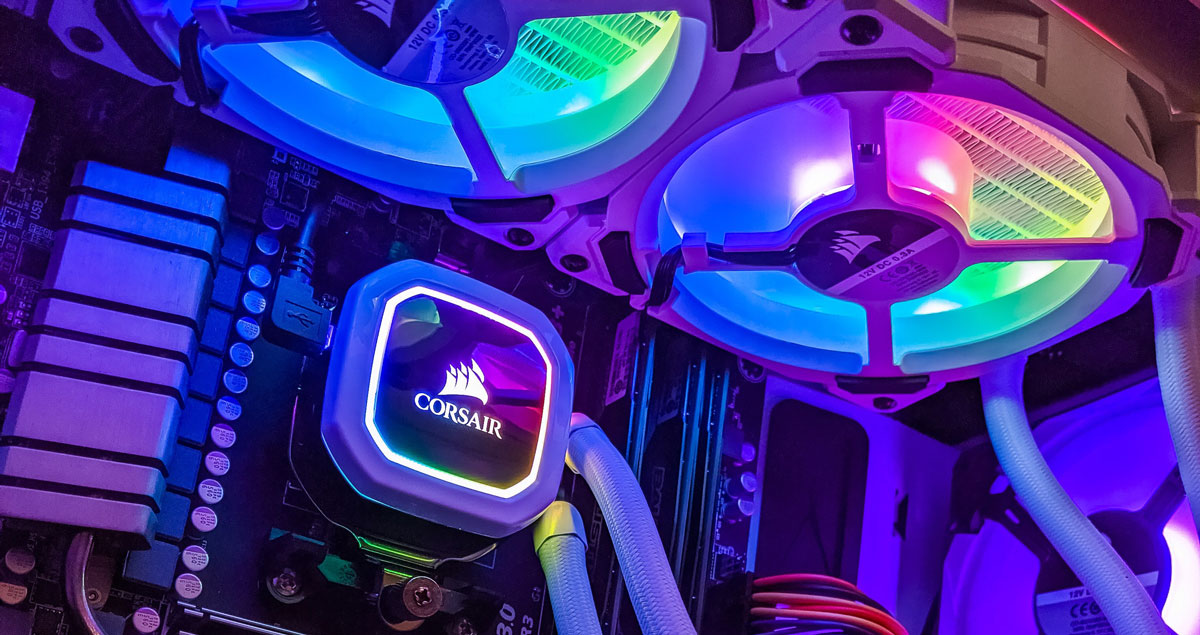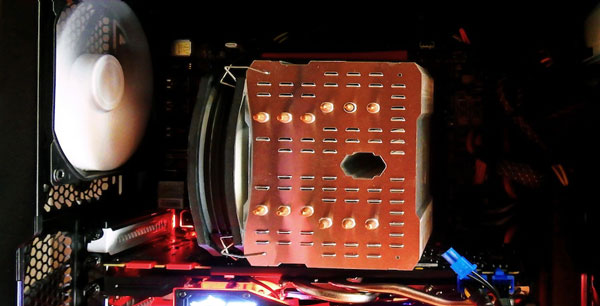For a long time, I thought that TDP is the power consumption of a CPU. I was wrong, TDP is not the CPU’s power consumption even though both are measured in Watts. Not only the CPUs, but we also have TDP figures in GPU and SOC as well. To make things more confusing, Intel and AMD both companies have their approaches to defining the TDP value. In this article, we will explain TDP and its relation to power consumption and performance.

Contents
What is TDP?
TDP stands for Thermal Design Power, also referred to as Thermal Design Point -a theoretical indicator for the amount of heat generated by a CPU or GPU during full load. So cooler manufacturers can design their cooler for that specific CPU or GPU unit for proper heat dissipation.
If you are wondering how this heat is generated? To figure this out, we have to dig into the CPU’s architecture. At the core of the CPU, there are several billions of transistors interconnected using different logic gates to perform operations. Each of these transistors turns ON/OFF continuously and represents the binary values 0 and 1. How fast this alternation will happen depends on the CPU’s clock speed. However, it isn’t directly proportional; a 5GHz frequency does not mean that your transistors are altering at 5 billion times a second.
During the transistor’s alternation process (becomes active state then back to passive state) some energy transforms into heat due to resistance and that’s the nature of every semiconductor chip. This generated heat is translated into Watts and is known as TDP.

At this point, you might figure out the difference between power consumption and TDP. Though, 10 years ago TDP’s definition was referred to as total power consumption.
If your CPU comes with a 125W TDP rating, your cooler must be capable of dissipating greater than 125W heat. This 125W TDP is just a theoretical calculation, we need a much stronger cooler practically, because of different TDP definitions by chipmakers. The latest Intel Core i9 13900K – A processor with 253W TDP consumes around 493W power under load. The actual power draw is almost double its TDP value. The core i9 13900K easily exceeds the mentioned TDP value on boost frequency when we put all cores under full load.
Intel and AMD’s TDP definition
It’s funny though, when I visited Intel’s website for their TDP definition, they pointed to TDP as the average power draw during normal load. That article does not mention the base clock or boost clock. In reality, Intel calculates their processor’s TDP at the base clock speed with average load, if we put a full load on all cores using prime 95 or any other stress testing program, even at the base clock TDP values simply more than they mentioned on the paper. Forget the boost clock and overclocking, we will catch that later.

However, AMD’s TDP calculation is different from intel, according to AMD TDP(watt) = (tCase(0C))/(HSF(0C/W)). Sounds difficult to understand? This equation means that AMD’s TDP value is very close to their processor’s boost clock. Much lower TDP compared to rival Intel, but it wasn’t the scenario until ZEN architecture came into play.
I can remember the old AMD FX 9590- a processor from the Bulldozer family with 220W TDP. At that time people were mocking AMD for their higher TDP. Some say the AMD processor serves well as a room heater, but the picture is a bit opposite now. The recent AMD flagship Ryzen 9 7950X comes with a 175W TDP rating against the Intel i9-13900K which has a 253W TDP rating while offering similar performance.
Overclocking TDP
Overclocking is popular among PC enthusiasts and gamers to extract performance juice from the CPU/GPU. You have to check your cooler’s capability before driving to overclock because the mentioned TDPs in the processor’s box are calculated for a regular frequency not for overclocking.
AMD leaves their all ZEN processors unlocked for overclocking while Intel limited overclocking features except for flagship K series processors. Even though AMD leaves all processors unlocked, lower-end models don’t have enough room for overclocking as AMD already pushed its limits. You can only achieve 100-200 MHz from their low-mid range processors.
Higher-end AMD and Intel’s K series processors benefit the most from the overclocking as highly binned chips are reserved for the flagship processors. Intel and AMD both companies didn’t bundle coolers with their unlocked CPU, because low-quality stock coolers aren’t suitable for high TDP throughput when these CPUs are overclocked.
Back to the overclocking, increase the vCore voltage and frequency rises at a leaner level depending on the chip’s silicon binning. However, TDP doesn’t scale linearly with frequency increase. When you increase the voltage to bump 100MHz clock speed, you might end up with more than 4-10oC temperature spikes. The overclocking TDP ratio isn’t 1:1, chipmaker themselves won’t miss that opportunity to score higher on benchmarks if they can manage the TDP with a normal cooler. This is another reason why they didn’t bundle a cooler with unlocked CPUs.
Coolers requirements for High TDP processor
If your CPU comes with a high TDP value greater than 95W, you might need a good quality aftermarket cooler even if you don’t have the plan to overclock.
For a decent 500MHz – 1GHz overclocking on the latest generation processor, extremely powerful CPU coolers are required. Large radiator water coolers are used to dispose of heat from the high TDP processors.
Aftermarket air coolers can achieve 300-400MHz overclocking at best, but they are more popular than water coolers for budget concerns.
Does higher TDP mean Better Performance?
In a general rule of thumb, the answer is yes. Usually, top-tier CPU/GPU contains more transistors than lower-end processors. The higher amount of transistors generates more heat means higher power draw and also high performance. But, there is no guarantee that high TDP processors always perform better. The overall performance also depends on the process node, IPC, clock speed, instruction set design, cache memory along with transistors count.
A 175W Ryzen 9 can match the 253W i9 13900K in most benchmarks, so there is no guarantee that high TDP processors always have better performance. But Ryzen 9 does have a higher TDP than its lower-end variants which have much lower TDP with downgraded performance.
Laptop TDP
Notebook and Laptop CPU/GPU usually have lower TDP compared to desktop parts. High-end mobile CPUs come with a 45-55W TDP rating while lower-end models only have less than 15W TDP. A decent air cooler can dissipate heat from Laptop, some laptop coolers are just a heatsink without a fan.
Apple Macbook Air is the best example of a fanless design. However, some Intel processors have less than 6W TDP and are often used in fanless Mini PC or low-powered Laptops. Of course, some laptops have overheating issues after continuous use. They are poorly designed cooling systems.
Rob is a passionate tech enthusiast, reviewer, and content creator at techpowernext. With over a decade of experience in the tech industry, he dives deep into the latest gadgets, software, and innovations. His mission is to demystify complex tech concepts and empower readers to make informed decisions.






